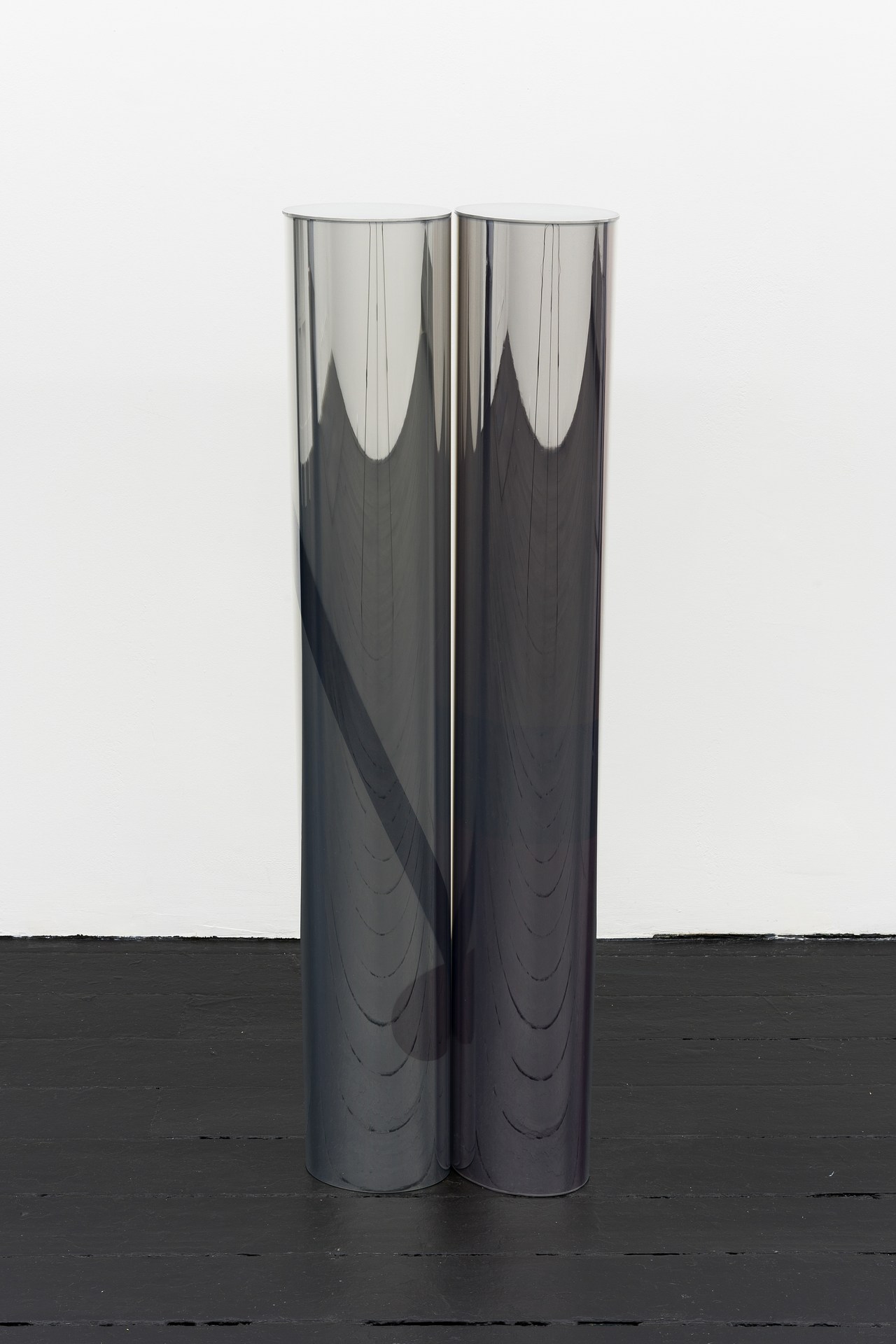A child and dreamer my whole life long (broken tree)
2004 - Sculpture (Sculpture)
175 x 80 x 70 cm
John Isaacs
A child and dreamer my whole life long (broken tree) (2004) is a sculpture made of filler, wire, copper, oil paint, and wood depicting a tree just at it’s moment of breaking into half – one part alive with foliage and blooming branches and the other the crisp of the break exposed, with the trunk adhered solidly to a plinth. The sculpture appears to speak quite bluntly about Isaac’s own sense of bleak pessimism when exposing a severed tree, the universe’s sacred sign of life and birth. Through the perfect rendering of this encapsulated moment, Isaacs demonstrates the strength of the sculptural artifact and his interest in failure and fragility. It also denotes that a sculpture is capable of giving off a very emotive and sensory feeling in an instant– the crisp snap of life through the metaphor of the break of the tree.
John Isaacs’ work encompasses many different media, though much of it has origins in sculpture. The artist continually redefines his style, moving seamlessly through installation, sculpture, photography, film, painting and drawing. Whatever the media, Isaacs’ pieces typically inspire contemplation. Whether it is a grotesquely real, severed arm with the word HATE tattooed across its knuckles, or a small, painterly ink drawing of a unicorn, the artist’s work always contains a thread of mystical wonder and brutish reality. Through his often humorous mixing of appealing optimism with abject pessimism, Isaacs examines our historically and culturally determined conventions. In so doing, the artist makes no distinctions between high and low, finding instead that all things have their root in the same base instincts. In his work, there is a strong sense of the universal connection that underlies our apparent isolation from one another as well as the presence of dreams, successes and failures of the individual and society. John Isaacs was born in Lancaster, UK, in 1968. He lives and works in Berlin.
Colors:
Related works sharing similar palette
» see more

© » KADIST
Yang Zhenzhong
2012Peasant Sensation Passing Through Flesh – 3 consists of a massage chair fixed to a wall...

© » SLASH PARIS
Matthieu Laurette — Une rétrospective dérivée (1993-2023) — MAC VAL Musée d'art contemporain du Val-de-Marne — Exhibition — Slash Paris Login Newsletter Twitter Facebook Matthieu Laurette — Une rétrospective dérivée (1993-2023) — MAC VAL Musée d'art contemporain du Val-de-Marne — Exhibition — Slash Paris English Français Home Events Artists Venues Magazine Videos Back Matthieu Laurette — Une rétrospective dérivée (1993-2023) Exhibition Mixed media Matthieu Laurette, Self-Portrait, 2014/2023...
Related works found in the same semantic group
» see more

© » MODERN MET ART
Artist Transforms Bicycle Chains Into Human Figures With Tethers Home / Art / Sculpture Artist Transforms Bicycle Chains Into Faceless Human Figures Tethered to the Modern World By Margherita Cole on December 7, 2023 Rather than carve sculptures from one material, Young-Deok Seo assembles his art from numerous, even hundreds, of individual pieces...

© » KADIST
Trisha Donnelly
2007Untitled is a black-and-white photograph of a wave just before it breaks as seen from the distance of an overlook...




